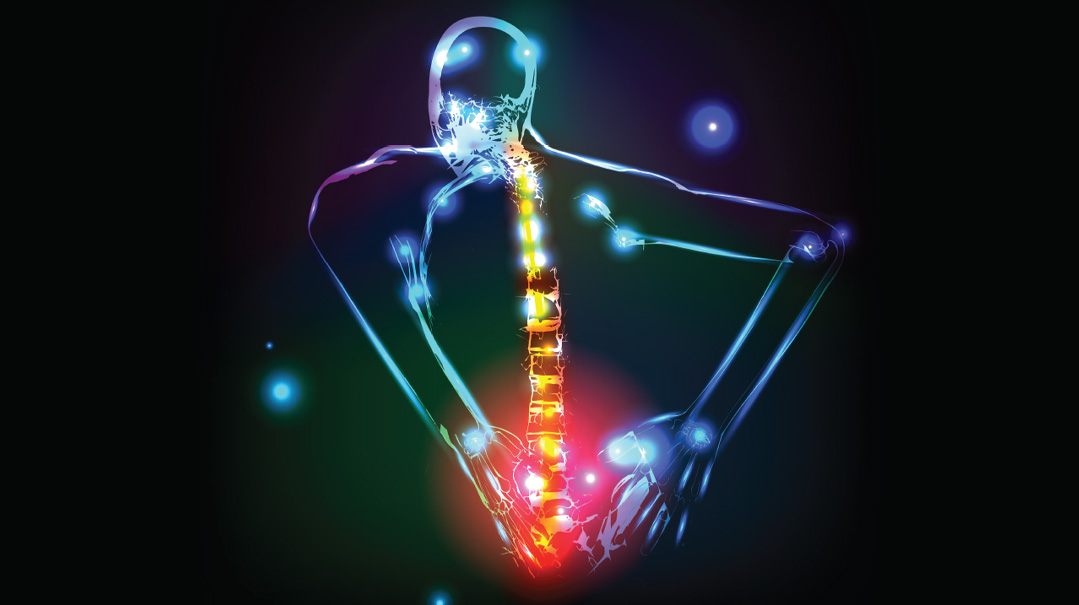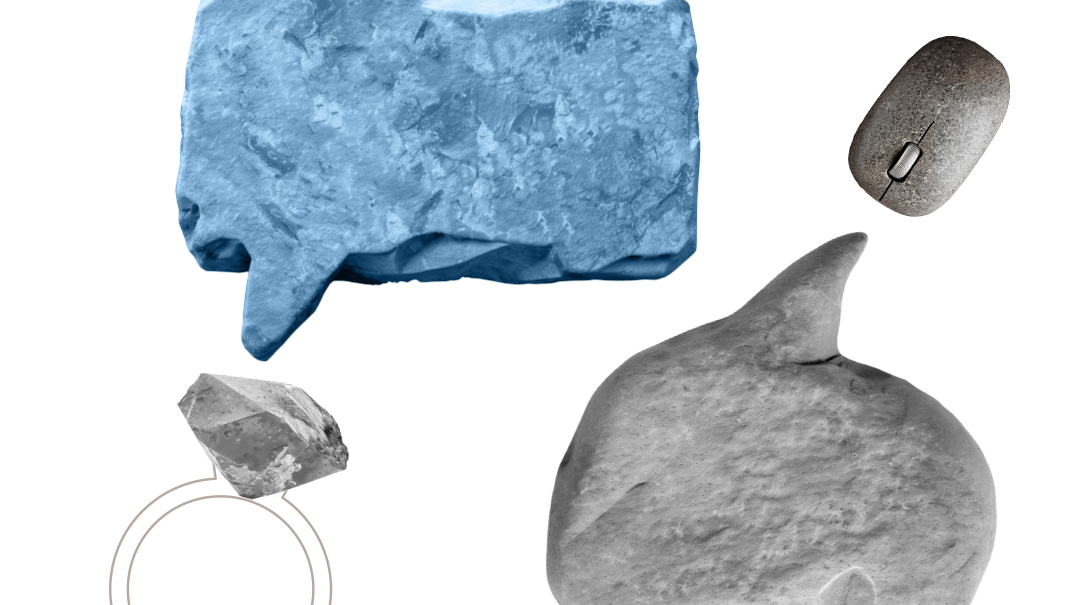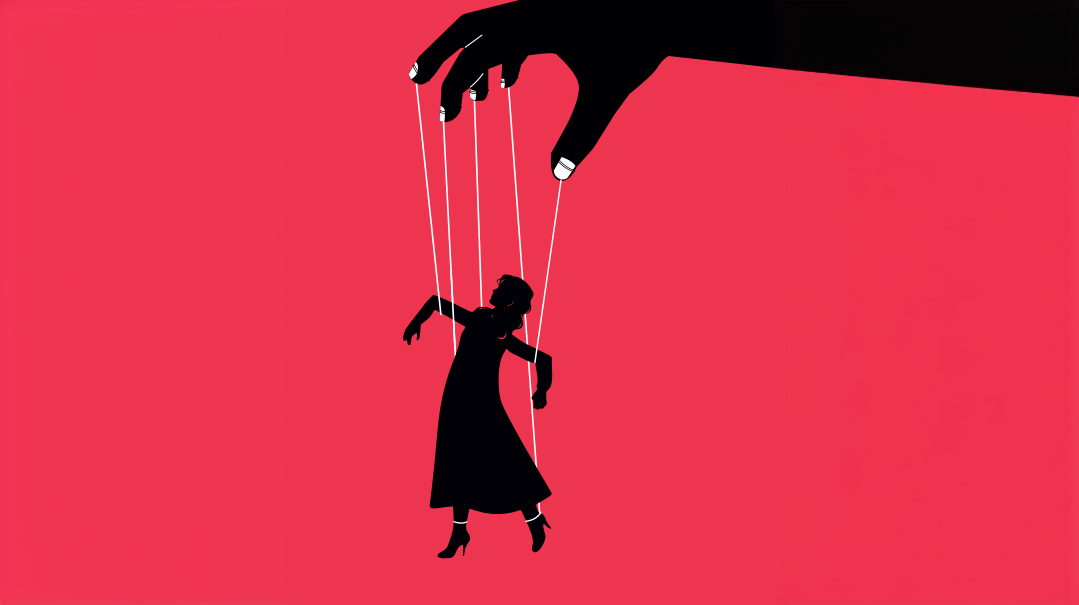Feel Your Way Well
| May 30, 2023What if you could get to the root of your pain — and heal it — by taking stock of your emotional state?

W
hen our bodies start to ache, we can usually identify the source of the problem: The kink in our neck is because we slept the wrong way, or our shoulder hurts because we lifted too heavy a box. But sometimes the physical pain that surfaces in our lives is actually triggered or exacerbated by our inner world and the way we experience or respond to life circumstances.
“The areas of tension in my patients’ bodies often directly correlate to emotional events in their lives,” says Dr. Ariella Borish, a chiropractor with 30 years of experience who has a practice in Atlanta, Georgia. “It could be as simple as tense shoulders. When a person feels she is carrying a lot of responsibility, it’s as if there’s an actual weight on her shoulders. Similarly, you wouldn’t believe the number of times I’ve had patients who are planning a big move, and before they even pack a single box, their back starts hurting. That back pain is clearly not coming from lifting boxes — it’s something much deeper than that.”
Dr. Borish looks at the human body as a physical hologram that can reveal the spiritual and emotional experiences a person is going through. “For instance, the pelvis is the foundation of the body,” she says. “So when a person shifts her foundation in any significant way — be it a momentous move, a joyous event like getting married, or a baalas teshuvah implementing serious life changes — it can often result in pelvic or lower back pain.”
When we feel an emotion, we experience it as a physical sense, whether we’re fully aware of it or not. If we’re happy, a sensation of lightness pervades our body. When depressed, we feel weighed down and lethargic. If we’re stressed, our bodies tense up and tighten.
By zeroing in on the location of a feeling in our bodies, we may be able to identify the root emotional cause of our physical pain and address it — healing both our physical and emotional pain in the process.
The Mind-Body Connection
Scientists have long been researching whether specific emotions correlate to certain regions within the body. In a recent study, 700 participants were asked to point to parts of the body in which they felt different emotions. Even though the study was conducted independently with each participant, there were consistent patterns of bodily sensations associated with the six basic emotions — anger, fear, disgust, happiness, sadness, and surprise. Sensations in the upper limbs were most felt in anger, with fear mostly in the chest, and surprise in the head and upper chest area. Sensations of decreased limb activity were specific to sadness, and sensations in the digestive system and around the throat area were mainly stimulated by disgust. Interestingly, happiness was the one emotion associated with sensations across the entire body.
In recent years, the concept of the mind-body connection has gained more recognition in mainstream medicine, and there are many books and workshops available to use as tools for healing chronic pain and other ailments by addressing the psychological roots of physical symptoms.
Perhaps the most famous approach was introduced by Dr. John E. Sarno, a renowned physician and professor of rehabilitation medicine at New York University School of Medicine. He believed that many physical illnesses — including chronic pain, back pain, and gastrointestinal issues — were not solely the result of structural or biochemical abnormalities but rather the manifestation of repressed emotions or stress. He coined the term “Tension Myositis Syndrome” (TMS) to describe this phenomenon and argued that the symptoms could be alleviated by addressing the underlying psychological causes.
“My life was changed by reading Dr. Sarno’s book,” says Rina, a mother of three and an accountant. When her lower back started hurting shortly after she gave birth to her third child, she assumed it was because she had experienced excruciating back labor and that the pain would subside within a few weeks, perhaps with some chiropractic adjustments. When the baby’s first birthday passed and she was still in intense pain, her friend suggested reading Dr. Sarno’s book, Healing Back Pain: The Mind-Body Connection.
“I resisted even reading it at first,” Rina says. “I wasn’t interested in someone telling me that my pain was made up. I knew it was real — I could barely get out of bed to pick up my baby.” But she reluctantly agreed to start it, and when she casually opened it one evening, she quickly saw that Dr. Sarno was careful to stress to his patients that his theory did not render their pain “simply in their minds.” He believed that his patients were in real physical pain, and that the pain was from emotions manifested through the physical body.
“I felt more open to his theories after that,” Rina says. “But the next issue was that I was pretty sure there was nothing particularly enraging or anxiety-producing about my life. I was doubtful that this intense pain could be caused by something I couldn’t even think of if I tried. And besides, I knew the pain began after a long and difficult back labor — it wasn’t hard to pinpoint when this all started.”
But Sarno’s theory encompasses all of this; he lays out the typical process and points out that oftentimes, there is one single occurrence or injury that a patient points to as the practical cause of her pain. This is part of the subconscious’s attempt to keep the pain purely in the physical realm. Of course, people often sustain all kinds of injuries, but those injuries should usually heal within a relatively short amount of time.
When weeks or months or even years go by and the pain has not subsided, this is a clue as to the real source of the pain: the subconscious and its push to protect us from part of ourselves. Sometimes our subconscious believes that the physical pain is more bearable than the pain involved in sitting with and processing our emotions.
Feeling Our Feelings
Chaya* visits a chiropractor weekly, both to release tension and to tune into specific events that may be triggering physical pain. “I once had seemingly random laryngitis,” she recalls, “and I could not understand why it was hurting me so much to swallow or to talk. After my weekly session, my chiropractor told me that she sensed a lot of tension in my body. Then she asked me a question that floored me: Do you feel like you’re not being heard by someone in your life?
“I couldn’t believe it. I’d recently been interacting with a very pushy shadchan who did not listen when I told her no to a suggestion. I was carrying a huge amount of resentment and frustration in my body, and as soon as my chiropractor asked me about it, I realized that my laryngitis was connected to the fact that I was quite literally not being heard. I got the message and resolved to increase my confidence when I spoke to others.
“In this generation, we spend a lot of time and energy talking about how we feel,” Chaya notes. “We talk to therapists, visit all kinds of doctors, read books on the topic, and attend workshops to analyze our inner world. But the truth is, when we simply stop to feel our feelings, they’ll often run their course cleanly and quickly.”
To put it another way: Emotional information is stored in “packages” in our organs, tissues, skin, and muscles and it stays in our body parts until we “release” them. Becoming fully present to the pain allows it to run its course and finally be released.
Dr. Alan Gordon, a psychotherapist and founder of the Pain Psychology Center in Los Angeles, believes that anxiety and fear fuel physical pain — and that mindfulness can help the pain subside. His book, The Way Out, presents his Pain Reprocessing Therapy as exactly that: a way out of physical pain. He suggests a practice which he calls “somatic tracking,” in which a patient pays close attention to his pain and as he does so, finds that the pain moves throughout the body. Oftentimes, the pain eventually dissipates as his patients track it.
Even though each session of somatic tracking is only a few minutes long, it takes tremendous inner strength to stay calm and present and fully engage in the sensations. Dr. Gordon advises people to track their pain from a place of curiosity rather than of fear or desperation. If someone begins somatic tracking with an agenda, or the pressure to have the experience alleviate the pain, or “work,” it will stand in the way of their mind being present to what is occurring in the body.
Dr. Gordon points out that when a person thinks he’s been injured, he often feels immediate pain, even if there is no actual injury. That’s because fear itself plays a large role in the intensity of physical pain. Compounding the issue is that in our digital age — where we’re constantly awaiting the next ping, ring, or news update — we live in a state of what Dr. Gordon calls “high alert.” The overload of technology has heightened our sense of constant alert, and this heightens our general susceptibility to manifesting physical pain.
To reset our system and bring healing, Norman Cousins, author of Anatomy of an Illness, suggests we laugh more. He documents his recovery from a crippling disease using heavy doses of vitamin C and belly laughter, which he induced by watching comedy. He found that laughter had an anesthetic effect on his pain; he could go two hours pain-free after a laughing session. This is because laughter and humor are a method of letting go of negativity. As Cousins continued to let go of his underlying negative emotions, there were positive and healing changes within his body.
“Breath has healing power, too,” Dr. Borish notes. “A long, deep, conscious breath is itself a spiritual experience because Hashem breathes life into us, and then we can choose to let that breath wash through us physically.”
According to Dr. Borish, “The level of physical flexibility that any person has is indicative of their spiritual or emotional flexibility. And flexibility is the complete and absolute indicator of how healthy someone is.”
Clients who have digestive issues and constipation often tell Dr. Borish that they think their physical symptoms are reflective of their issues with relinquishing control and letting go of things in their lives. This is manifested in the intestinal track becoming stuck, or IBS (irritable bowel syndrome).
Dr. Borish gives a visual of a willow tree — it has strong and entrenched roots in the ground that keep it steady, but its branches flow easily. “A human being needs that, too,” she says. “We need strong roots and easy flow. When a person isn’t in their flow, things can become restricted and sickness can develop. When we’re not spiritually and emotionally flexible, the body can manifest that as pain.”
Striking “Gold”
The mere knowledge that there’s a deep relationship between emotions and physical sensations can transform the emotional and physical aspects of people’s lives. “I’ve seen it time and again,” says Dr. Borish. “The pain starts to subside as soon as clients understand that their bodies are simply reflecting what’s going on internally.”
Sometimes it can happen in the opposite direction, too. “Sometimes you can go from the outside in and not just the inside out — because it’s a mirror both ways,” Dr. Borish explains. “So when the physical healing begins, it opens up a reservoir of healing inside.”
Dr. Sarno’s healing method relies heavily on education, in which patients are taught about the mind-body connection and the role of stress in physical symptoms. The awareness itself helps patients learn to identify and address the emotional and psychological triggers that contribute to their symptoms.
This process takes dedication and commitment. Dr. Sarno suggests setting aside time every day to review this material so that it seeps into the subconscious, and the body can no longer trick the conscious mind into believing something is wrong or damaged.
He encourages readers to make a list of anything that may be contributing to their pain and then to write an essay about each item. This pushes patients to focus in depth on the emotional areas of importance in their lives.
In Sarno’s words, “The unconscious is timeless.” So whether something occurred recently or many years ago, if it was significant to your life, it can affect you forever. Our subconscious mind is childlike and irrational. It will likely not have a reasonable explanation for being angry and in pain. In addition, Dr. Sarno advises listing things you know upset you but that you don’t feel you can express, as it may be deemed inappropriate or unacceptable.
After reading Dr. Sarno’s book, Rina opened herself up to the possibility of something deeper propelling her pain. She followed Dr. Sarno’s instructions and made a list of any potential stressors in her life. As Sarno encourages, she didn’t hold back. She listed things like her children, husband, parents, and childhood. She listed details about her job and even her frum lifestyle that could be causing any repressed stress.
“Even before I officially ‘struck gold’ and found the probable cause, my pain began to lessen,” Rina remembers. “Just recognizing the distraction my subconscious was creating seemed to rob it of its power over me.”
While Sarno does not believe a person needs to pinpoint the exact source of anger or anxiety, he does suggest becoming familiar with our inner world and expressing the generally repressed emotions through writing or journaling, as this slowly raises the feelings from the subconscious to the conscious (see sidebar). This needs to become a lifelong practice if we are to avoid the subconscious trapping us in the claws of chronic pain.
Rina recounts the time she went for a CT scan after her chiropractor and physical therapist recommended it. “I went because I wanted to rule out anything dangerous — and Dr. Sarno suggests doing so in his book,” she says, “but I was armed with the knowledge that they would likely find herniated or slipped discs, and that if they did, it was normal and nothing for me to worry about.”
Indeed, she was told she had two herniated discs and the doctor encouraged her to undergo immediate surgery, claiming with no uncertainty that no other method of intervention would make a difference.
She decided to give herself a few months of reading and rereading Sarno’s work until it would hopefully seep deep into her subconscious. And she is so glad she did; two months later, she was virtually pain-free.
She remembers her father’s two back surgeries and how his chronic back pain persisted even after them. “I wish he had known what I know now,” she says with a sigh. “He could have probably avoided both surgeries and years of pain.”
Rina still occasionally has flare-ups of back pain, but they’re not intense, and when the pain resurfaces, she sees right away that it’s linked to a particularly stressful experience or life stage. Because of Rina’s prior experience with the Sarno Method, she’s able to do the inner work more easily so the pain subsides quickly.
While Dr. Sarno’s method has gained recognition in mainstream media, it’s also been met with some degree of skepticism and criticism. Some argue that the psychological roots of physical symptoms are overstated and that structural abnormalities play a more significant role. To this, Sarno brings studies in which hundreds of patients showed up on MRIs or CT scans with structural “abnormalities” (for example, herniated discs, degenerative disc disease), yet they suffered no pain — while their counterparts with the same imaging, or even less-striking structural changes, were in intense pain.
Sarno maintains that structural changes in the spine and accompanying discs are a normal and painless part of aging, much like brown hair turning gray. He believes that the subconscious is on a mission to protect the conscious mind, and to that end, it provides distraction from the deep pain, anger, or anxiety and instead focuses the conscious brain on physical pain. If a patient is under the impression that something is wrong with his spine or body, the fear will feed the pain. And thus, the more intense the pain, the more successful the subconscious’s mask.
If emotions really do lodge themselves in specific parts of the body, then according to Rina’s back pain, she must have felt some lack in her support system.
“That’s true,” Rina admits. “When I did the work and allowed myself to go deeper and deeper through my journaling and to be fully honest with myself, I began to see that I was resentful of the burden I carried to provide financially for our family. Right around the time of my third birth, my husband and I decided that he would stay in learning full-time for another few years. It’s something I deeply wanted and supported, so I simply couldn’t accept that I had any inner turmoil about it.
“We were still able to move forward with our plan for my husband to stay in learning,” she says, “but I was able to do it with a full heart and a sense of peace, knowing I would allow myself to acknowledge and ask for any support I needed in order to make it happen.”
Rina emphasizes that the cause of the repressed resentment or anxiety does not necessarily need to be “fixed” or worked out for the physical pain to subside. As Dr. Sarno states, the mere knowledge of the “secret” her body was trying to cover up takes away the pain’s power.
“It’s been really enlightening to see how my healing journey has taken a spiritual turn,” Rina notes. “Embracing myself, embracing all of who I am and what I experience — so much of that is what I try to do in my personal growth as well. The only way I can achieve real trust in Hashem is to acknowledge what I’m afraid of, without blaming myself for my lack of bitachon.
“I’m actually grateful for my back pain, because it has opened my mind to a self-acceptance I never thought possible,” says Rina. “I’ve learned that Hashem accepts me as I am, too. And that is the greatest gift of all.”
3 Steps to Healing
How does one begin healing after many months or even years of pain? Dr. Sarno suggests a three-pronged approach:
Education and Awareness
Once you’ve confirmed that there is nothing dangerously wrong with your body that needs immediate medical attention (such as a tumor or cancer), you can safely assume there is an emotional aspect to your pain, and you can begin to focus your energy on this. Although many patients have found themselves feeling better simply by reading Dr. Sarno’s book (education), many more find they need to do deep inner work to heal.
Emotional Expression
Start journaling. Allow yourself the freedom to write whatever comes to mind, even if it means tearing up your writing when finished. Repressed emotions can cause physical tension and symptoms; releasing those feelings and accepting them can reduce those very symptoms. If you’re struggling to pinpoint what is bothering you, focus your attention on where the pain is presenting in your body. This may point you in the direction of subconscious or repressed pain. Go deep, and then go deeper.
Talk to the fear
Many times, a person will avoid activities not because of the pain itself, but because of the fear of pain. In these cases, Dr. Sarno suggests talking to your fear, telling your body that you know what’s really going on and that nothing is truly wrong with you. Push through the pain to do things you thought were not possible. Only as much as you allow the fear to dictate what you do can the pain continue to rule you.
(Originally featured in Family First, Issue 845)
Oops! We could not locate your form.







